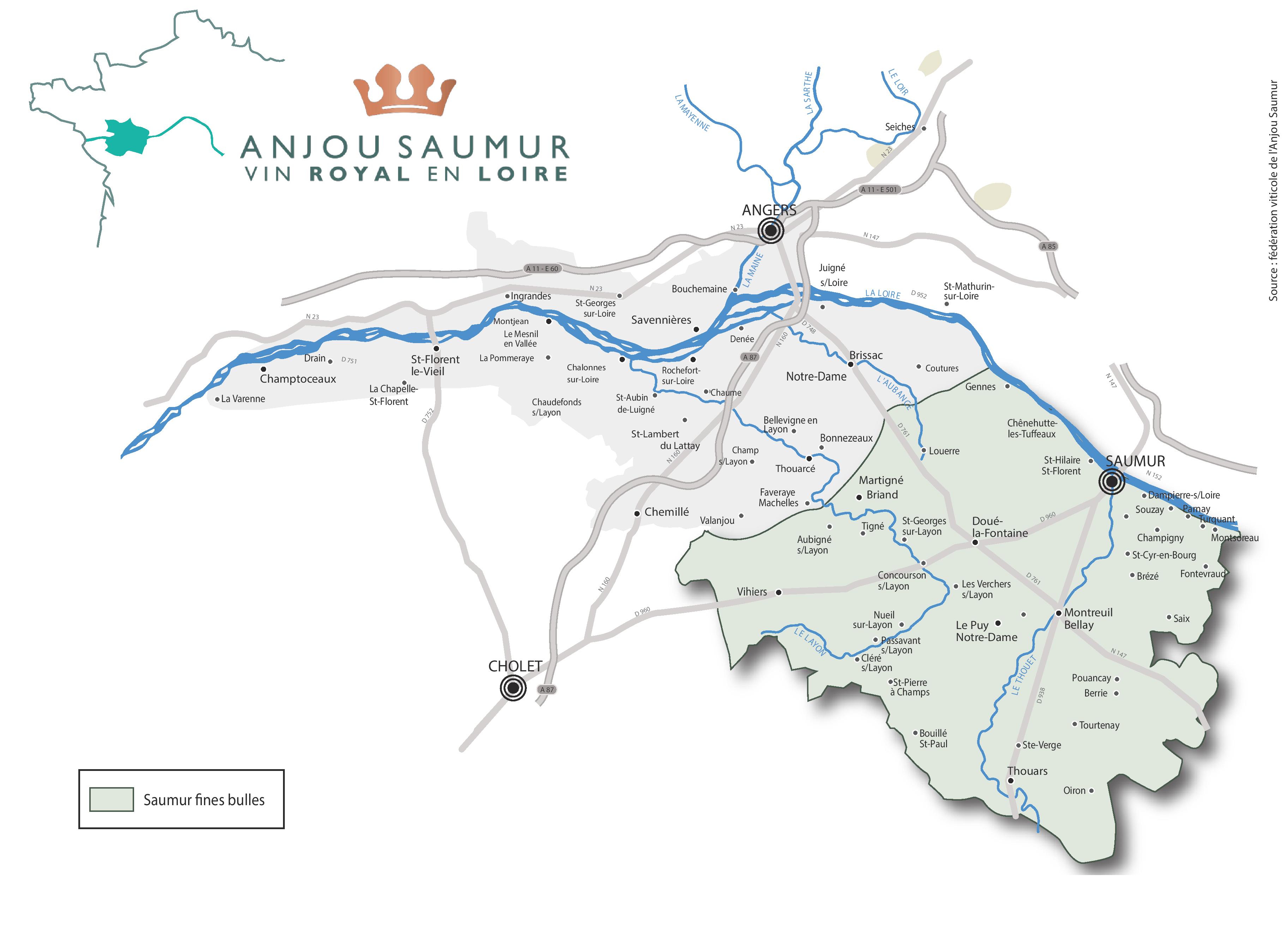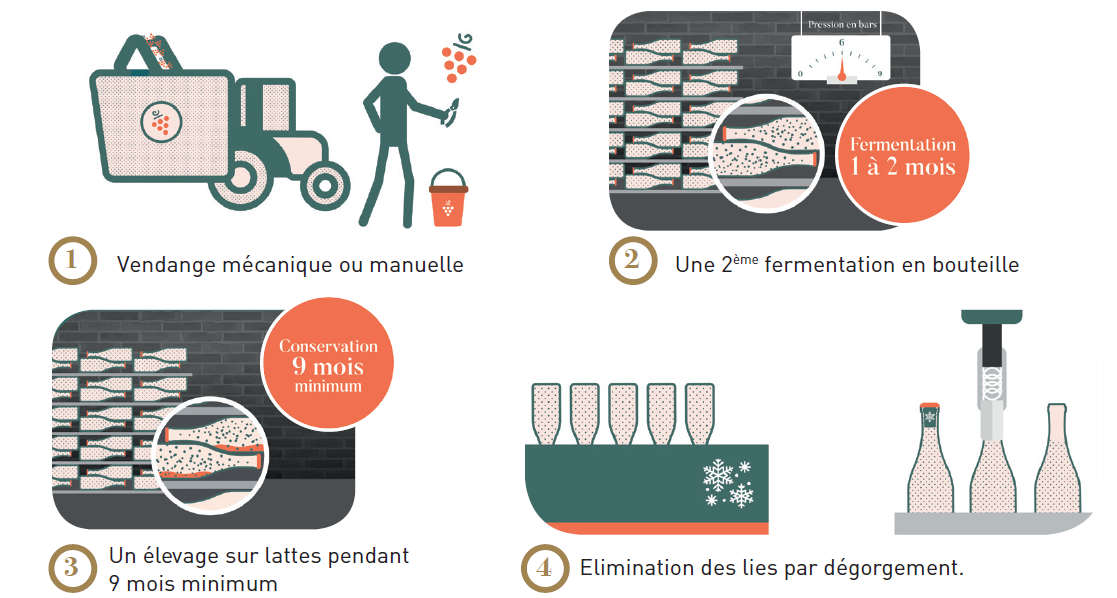All about Saumur Fines Bulles
History of Saumur Fines Bulles
As early as the 15th century, producers observed that wine bottled during the winter could start fermenting again when the warmer weather returned, and so began to sparkle while retaining its aromatic finesse. This second fermentation in the bottle was mastered at the beginning of the 19th century.
Sparkling wine production was then able to develop in the vineyards. They benefited from the extensive network of cellars dug into the tuffeau chalk at the heart of which the wines could be matured in ideal conditions. Maison de Fines Bulles then set up on the banks of the Loire, taking advantage of the river to trade these sparkling wines. It was in 1957 that the AOC Saumur Fines Bulles was recognized.
Le Saviez-Vous?
The origins of troglodytic cellars lie in the quarrying of tuffeau, the white stone used to build many of the Loire châteaux.
Varieties confer richness and flavor
Two emblematic grape varieties are present at the heart of the Saumur Fines Bulles appellation: chenin for whites and cabernet franc for rosés.
Other grape varieties make up a smaller proportion of these blended wines: pineau d'Aunis, cabernet sauvignon, chardonnay, grolleau
Did You Know?
It's the chenin, grown in the environmental conditions of the Saumurois, that gives Saumur Fines Bulles all its aromas.
Key figures
Figures based on average harvests over the last 5 years
.1,600
Ha100k
Hl300
Producers
Origins
History
As early as the 15th century, winemakers observed that wine bottled during the winter could start fermenting again when the first warm spells returned, and would then begin to sparkle while retaining its aromatic finesse. This second fermentation in the bottle was mastered at the beginning of the 19th century.
Sparkling wine production was then able to develop in the vineyards. They benefited from the extensive network of cellars dug into the tuffeau chalk at the heart of which the wines could be aged in ideal conditions. Maison de Fines Bulles then set up on the banks of the Loire, taking advantage of the river to trade these sparkling wines. It was in 1957 that the AOC Saumur Fines Bulles was recognized.
| 1811 | Beginning of Loire fine bubble production |
| 1957 | Birth of Saumur Fines Bulles |
Presentation
A mild climate reigns over the 1,400ha appellation area, which stretches south of the Loire on two verdant hillsides meeting at Saumur. The characteristic subsoil element is the famous tuffeau, which gives this wine its distinctive character.

Soil and climate
The Saumur fine bubbles zone, on limestone soil (tuffeau), extends over part of the schist soils of "Anjou noir". The variability of soils and nuanced climates (exposure, proximity or not to the Loire) explain the expression of various grape varieties within the appellation.
The climate of the saumuroise meeting is oceanic. The Mauges mountains, located to the west of the geographical area, nuance this oceanic characteristic with a foehn effect. The Loire River and its tributaries also play an important role as thermal regulators.
Cultivation methods

Terroir and wines
From the 15th century onwards, producers have observed that wine bottled during the winter, and after a second fermentation linked to the return of the first heat, sparkles while retaining its aromatic finesse. Initially "pétillants", the mastery of the second fermentation in the bottle, favors, thanks to Jean Ackerman, the development of sparkling wine production which benefits from the existence of large cellars dug into the tuffeau chalk and in the heart of which the wines can be preserved and aged at a low and constant temperature and in ideal hygrometric conditions.
The late-ripening Chenin grape variety, planted in the environmental conditions of the Saumurois, then develops proven aptitudes for the production of fresh, fine-bubble sparkling wines with fruit, floral and pastry aromas.
